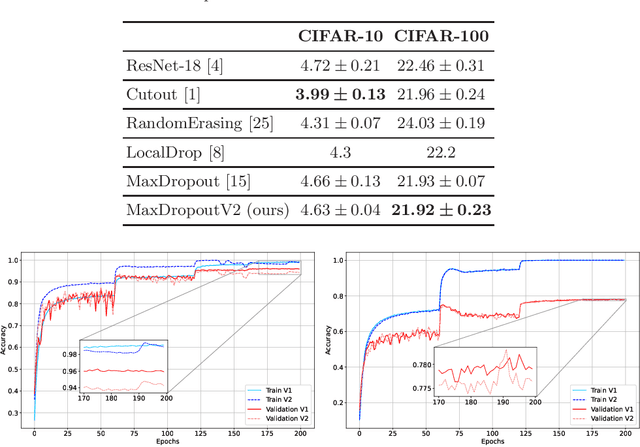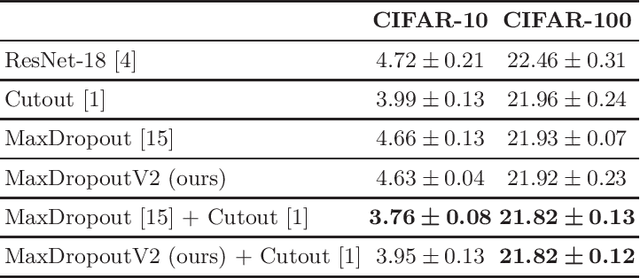Claudio Filipi Goncalves do Santos
MaxDropoutV2: An Improved Method to Drop out Neurons in Convolutional Neural Networks
Mar 05, 2022



Abstract:In the last decade, exponential data growth supplied the machine learning-based algorithms' capacity and enabled their usage in daily life activities. Additionally, such an improvement is partially explained due to the advent of deep learning techniques, i.e., stacks of simple architectures that end up in more complex models. Although both factors produce outstanding results, they also pose drawbacks regarding the learning process since training complex models denotes an expensive task and results are prone to overfit the training data. A supervised regularization technique called MaxDropout was recently proposed to tackle the latter, providing several improvements concerning traditional regularization approaches. In this paper, we present its improved version called MaxDropoutV2. Results considering two public datasets show that the model performs faster than the standard version and, in most cases, provides more accurate results.
MaxDropout: Deep Neural Network Regularization Based on Maximum Output Values
Jul 27, 2020



Abstract:Different techniques have emerged in the deep learning scenario, such as Convolutional Neural Networks, Deep Belief Networks, and Long Short-Term Memory Networks, to cite a few. In lockstep, regularization methods, which aim to prevent overfitting by penalizing the weight connections, or turning off some units, have been widely studied either. In this paper, we present a novel approach called MaxDropout, a regularizer for deep neural network models that works in a supervised fashion by removing (shutting off) the prominent neurons (i.e., most active) in each hidden layer. The model forces fewer activated units to learn more representative information, thus providing sparsity. Regarding the experiments, we show that it is possible to improve existing neural networks and provide better results in neural networks when Dropout is replaced by MaxDropout. The proposed method was evaluated in image classification, achieving comparable results to existing regularizers, such as Cutout and RandomErasing, also improving the accuracy of neural networks that uses Dropout by replacing the existing layer by MaxDropout.
 Add to Chrome
Add to Chrome Add to Firefox
Add to Firefox Add to Edge
Add to Edge